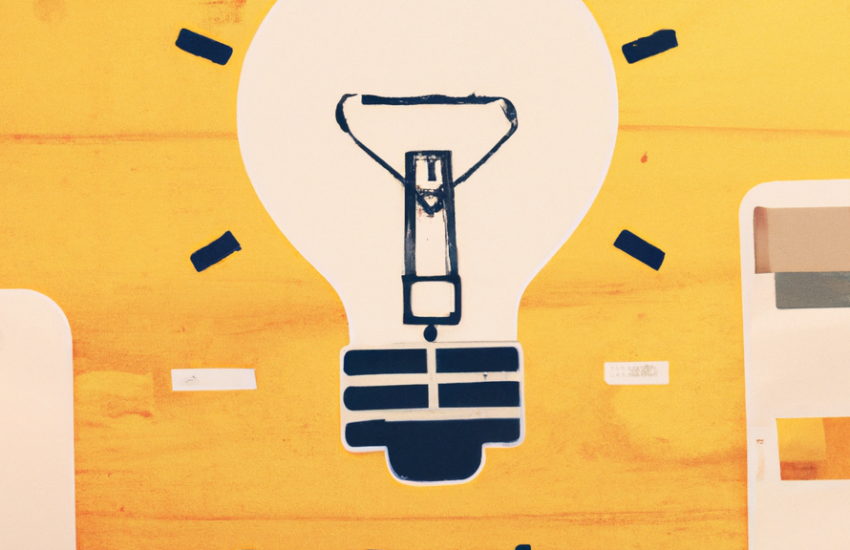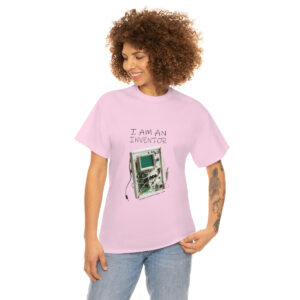THE ART OF PROTOTYPING: A COMPREHENSIVE GUIDE TO BUILDING AND TESTING YOUR IDEAS
In the world of invention, product design, and innovation, prototyping is a crucial step in the process of bringing an idea to life. The art of prototyping involves building and testing your ideas to ensure that they are viable and can be turned into a successful product. Whether you are a seasoned inventor or a novice with a great idea, understanding the prototyping process is essential to your success. That’s why we’ve put together a comprehensive guide to help you navigate the world of prototyping.
In this article, we’ll cover everything from the basics of prototyping to the different types of prototypes and the tools you’ll need to get started. So, whether you’re looking to build a new product or improve an existing one, read on to learn more about the art of prototyping.
THE ART OF PROTOTYPING: A COMPREHENSIVE GUIDE TO BUILDING AND TESTING YOUR IDEAS
Innovation is the driving force behind the success of any business. It is the ability to come up with new ideas, products, and services that can meet the needs of customers and solve their problems. However, the process of innovation is not easy. It requires a lot of effort, time, and resources to come up with a successful invention or product design. One of the most important steps in this process is prototyping. In this article, we will discuss the art of prototyping and provide a comprehensive guide to building and testing your ideas.
What is Prototyping?
Prototyping is the process of creating a preliminary model or sample of a product or invention idea. It is a crucial step in the product design process as it allows you to test and refine your ideas before investing in the final product. Prototyping can take many forms, from a simple sketch on paper to a fully functional model. The goal of prototyping is to identify any flaws or weaknesses in the design and make improvements before moving on to the final product.
Why is Prototyping Important?
Prototyping is important for several reasons.
- It allows you to test your ideas and see how they work in the real world. This can help you identify any flaws or weaknesses in the design and make improvements before investing in the final product.
- Prototyping can help you communicate your ideas to others. By creating a physical model, you can show others what your product or invention idea looks like and how it works. This can be especially helpful when trying to secure funding or support for your project.
- Finally, prototyping can help you save time and money in the long run. By identifying and fixing any issues early on, you can avoid costly mistakes and delays later on in the product design process.
The Art of Prototyping: A Comprehensive Guide
Now that we understand the importance of prototyping, let’s take a closer look at the art of prototyping and how to build and test your ideas.
Step 1: Define Your Goals
The first step in the prototyping process is to define your goals. What do you hope to achieve with your prototype? Are you trying to test the functionality of your product or invention idea? Are you trying to identify any flaws or weaknesses in the design? Are you trying to communicate your ideas to others? By defining your goals, you can create a prototype that is tailored to your specific needs.
Step 2: Choose Your Materials
The next step is to choose your materials. What materials will you use to create your prototype? Will you use paper, cardboard, or foam board? Will you use 3D printing or CNC machining? The materials you choose will depend on your goals and the complexity of your design. For simple designs, paper or cardboard may be sufficient. For more complex designs, 3D printing or CNC machining may be necessary.
Step 3: Create Your Prototype
Once you have defined your goals and chosen your materials, it’s time to create your prototype. This is where the real art of prototyping comes into play. You will need to use your creativity and problem-solving skills to bring your ideas to life. Start by creating a rough sketch or drawing of your design. Then, use your chosen materials to create a physical model. Don’t worry about making it perfect at this stage. The goal is to create a preliminary model that you can test and refine.
Step 4: Test Your Prototype
The next step is to test your prototype. This is where you will identify any flaws or weaknesses in the design and make improvements. Start by testing the functionality of your prototype. Does it work as intended? Are there any issues with the design? If so, make note of them and make the necessary improvements. You may need to create multiple prototypes before you get it right.
Step 5: Refine Your Prototype
Once you have identified any flaws or weaknesses in the design, it’s time to refine your prototype. This is where you will make the necessary improvements to create a final product that meets your goals. Use your creativity and problem-solving skills to refine your design and make it as functional and aesthetically pleasing as possible.
Step 6: Repeat the Process
Finally, once you have refined your prototype, it’s time to repeat the process. Create a new prototype and test it again. Keep refining and testing until you have a final product that meets your goals and is ready for production.
Conclusion
In conclusion, the art of prototyping is a crucial step in the product design process. It allows you to test and refine your ideas before investing in the final product. By following the comprehensive guide outlined in this article, you can create a successful prototype that meets your goals and is ready for production. Remember to define your goals, choose your materials, create your prototype, test it, refine it, and repeat the process until you have a final product that meets your needs. With the right approach and mindset, you can master the art of prototyping and bring your ideas to life.
- A Comprehensive Guide To Wireframing And Prototyping …
Mar 1, 2018 … Clickable prototypes also allow us to test our designs with users and … idea and your final build — as a core part of the design process. - Test Your Prototypes: How to Gather Feedback and Maximize …
May 2, 2022 … For instance, if your prototype is a paper interface, you’ll need to conduct in-person tests with people and guide them through the process … - A Comprehensive Guide To Product Design — Smashing Magazine
Jan 31, 2018 … Build a prototype (or series of prototypes) to test your hypothesis. Creating a prototype lets designer see if they’re on the right track, … - User Testing: The Ultimate How-To Guide
Aug 5, 2021 … Prototypes are a quick, cost-effective way of testing your idea before developing it into a fully-fledged product. Test: Put your prototype in … - What is a prototype? The complete guide · Sketch
Mar 18, 2022 … … prototype is and how it can help you test out your designs ideas. … a prototype is an early model of an object that you build to test … - Application prototyping: A comprehensive guide – Photutorial
Apr 6, 2023 … By creating a prototype, the development team can test different user … While app prototyping has many advantages, such as testing ideas, … - Paper Prototyping: The 10-Minute Practical Guide
Oct 5, 2021 … Paper prototyping is the process of developing ideas and designing user flows using hand-sketched “screens” that represent a digital product … - Prototype Testing 101: A Detailed Guide For Creating Sticky Products
Jun 28, 2022 … Prototype testing helps you validate ideas in the early stages of … If you want to build a product that truly meets the needs of your … - The Ultimate Guide to Prototyping
The different ways to build a ready-to-use digital prototype. Chapter 5 – Creating Prototypes for Usability Testing. How to develop and test prototypes for … - From Idea to Execution – A Guide to Prototyping Your Digital Product …
Feb 15, 2023 … Interactive prototypes are useful for testing the usability and user experience of a product and for demonstrating the full range of features …
The lesser-known side of The Art of Prototyping: A Comprehensive Guide to Building and Testing Your Ideas
- The first recorded patent in history was granted in Venice, Italy in 1474 for a device that improved the efficiency of canal locks.
- Thomas Edison held over 1,000 patents during his lifetime and is credited with inventing the phonograph, motion picture camera, and practical electric light bulb.
- The concept of rapid prototyping using computer-aided design (CAD) software was first introduced in the late 1980s.
- Invention ideas can come from anywhere – some famous examples include Post-it notes (created by accident when a scientist at 3M was trying to develop a stronger adhesive), Velcro (inspired by burrs sticking to clothing), and the Slinky toy (invented after accidentally knocking over a tension spring).
- Product design involves not only aesthetics but also functionality – designers must consider factors such as ergonomics, materials used, manufacturing processes involved, and user experience.
- Many successful inventions have been created through collaboration between multiple individuals or teams – for example, Alexander Graham Bell had assistance from his father-in-law who helped fund his research while working on developing telecommunication devices like telephones.
- Intellectual property protection is crucial for inventors seeking to profit off their creations – this includes obtaining patents or trademarks which prevent others from copying or profiting off their work without permission

Are you ready to become an inventor?
Getting your idea out of your head and into your hands is only the first in a long set of steps towards becoming a successful inventor.

First Steps To A Successful Invention
At Invention Therapy, we believe that the power of the internet makes it easier than you think to turn your invention idea into a reality. In most cases, you can build a prototype and start manufacturing a product on your own. Changing your way of thinking can be difficult. Being an inventor requires you to balance your passion with the reality of having to sell your products for a profit. After all, if we can't make a profit, we won't be able to keep the lights on and continue to invent more amazing things!Please subscribe to our Youtube Channel!




